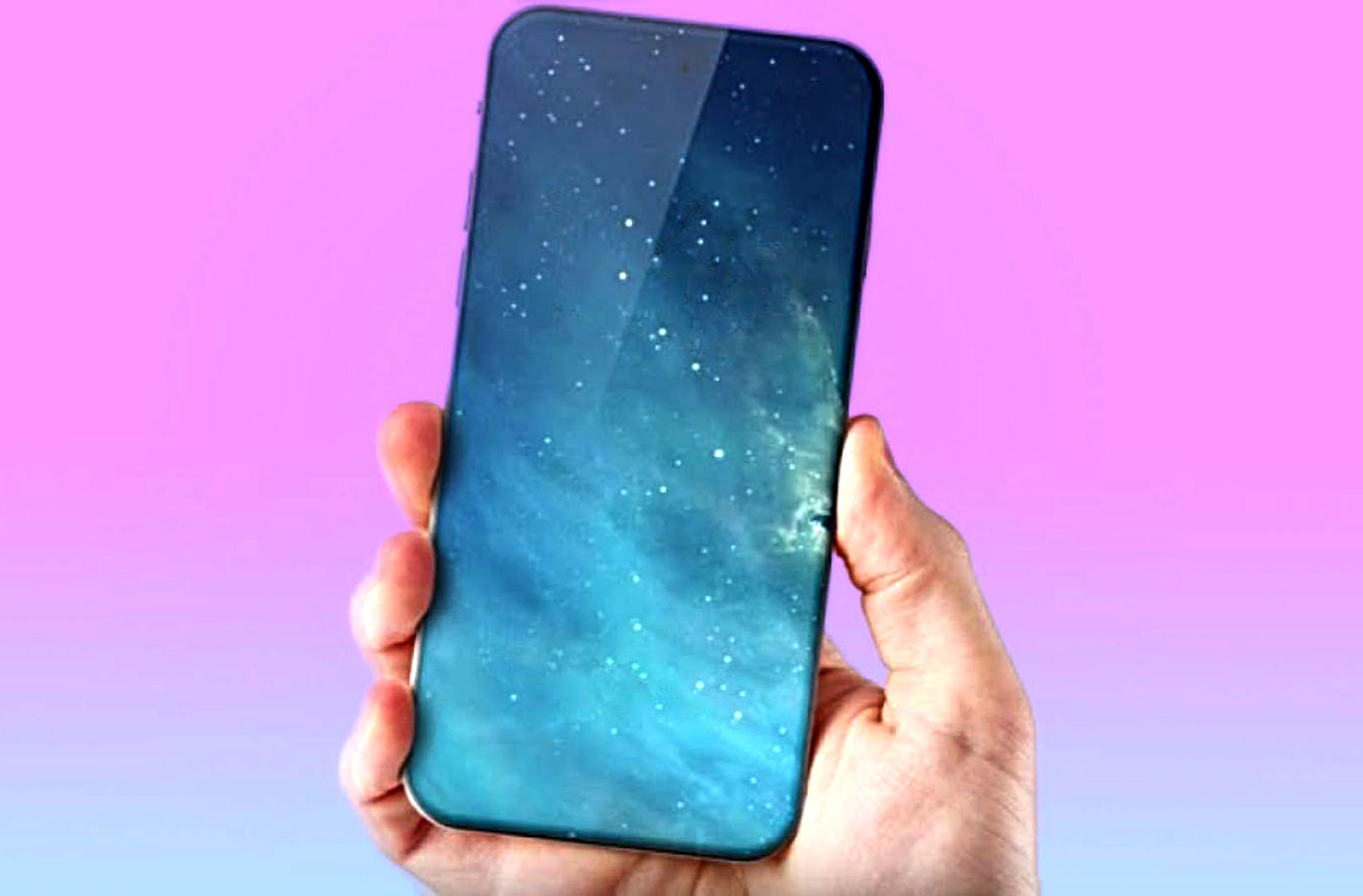Apple is reportedly developing a radically redesigned iPhone Pro model to mark the 20th anniversary of the iPhone, featuring unprecedented upgrades and a bold new design.
A new report from South Korea suggests this special iPhone could feature a truly bezel-less display that curves along all four edges - a major design leap in the history of iPhones.
Four-edge curved display: A visual revolution

According to ETNews, Apple plans to implement a "quad-curved" screen technology for its 2027 iPhone. Unlike current smartphones that curve only on the sides, this display would extend over the top and bottom edges as well, creating an immersive visual experience where content flows seamlessly over the device's edges.
This news follows Bloomberg’s recent report that Apple is working on an iPhone made entirely of curved glass, without any cutouts. Meanwhile, The Information cited sources stating that at least one iPhone model in 2027 will feature a truly bezel-less screen - expected to be a high-end iPhone Pro edition.
A revolution on par with iPhone X
If realized, this would mark the most dramatic design overhaul since the iPhone X in 2017, which eliminated the Home button, introduced Face ID, and ushered in gesture-based navigation.
The 20th anniversary iPhone is expected to carry on that legacy of innovation, delivering a true “all-screen” interface without notches or borders.
Next-gen chips and battery innovations
Apple is also said to be developing a next-generation OLED display driver chip using 16nm FinFET technology, instead of the traditional 28nm process. This advancement will help conserve power - critical as iPhones become thinner and AI features require more energy.
Additionally, the new iPhone may use pure silicon batteries, which offer higher energy density than current graphite-based cells, extending battery life.
Apple is reportedly in discussions with OLED suppliers Samsung Display and LG Display to bring these technologies to life.
Return to ultra-thin design, with engineering challenges ahead
This iPhone is expected to continue Apple’s shift toward ultra-thin designs, beginning with the iPhone 17 Air in 2025. The 2027 Pro version may combine this thinness with a glass-dominated aesthetic.
However, engineering a display that curves on all four edges presents major challenges. Apple will need to hide the Face ID sensors, front camera, and earpiece beneath the screen - no easy feat.
To bridge the gap, The Information reported that the iPhone 18 Pro and Pro Max (due in 2026) will debut under-display Face ID, with only a small hole for the selfie camera. Industry analyst Ross Young confirmed this development.
For the camera, Apple is reportedly working on its own under-display solution. In April 2024, LG Innotek, one of Apple’s Korean suppliers, was revealed to be developing a lens system that completely hides the camera when inactive. This multi-layer optical design minimizes distortion and improves brightness, addressing common issues with under-display cameras.
Beautiful, but fragile?
Despite its stunning appearance, a truly bezel-less design may be more fragile in the event of drops, especially at curved corners that could become structural weak points.
Moreover, without bezels to grip, Apple will likely need to develop new touch rejection algorithms and adapt the iOS interface for edge gestures and accidental touches.
If Apple can overcome these hardware and software challenges in time, the 20th anniversary iPhone could become the ultimate tribute to the device that transformed the tech world.
Hai Phong